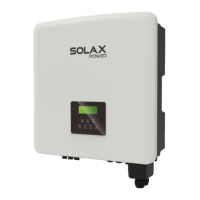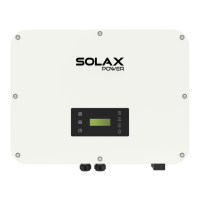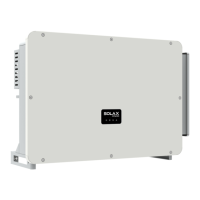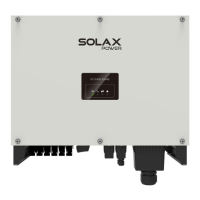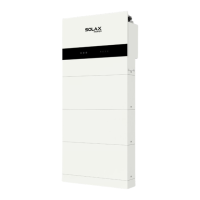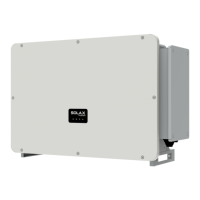Diagram D: N line and PE line together, M series inverter;
( Applicable to Australia)
Note!
The RCD on the gure represents a leakage protection
device with a circuit breaker function.
• When power cuts suddenly, the inverter connects the N
line of EPS(Off-grid) load with the ground through relay,
providing a xed zero potential for EPS(Off-grid) load and
ensuring the safety of electricity use by users.
• Please control the inverter load and make sure it is
"output value" in "within " EPS(Off-grid) mode, otherwise
the inverter will stop and alarm overload fault".
• Please confirm with the grid operator whether there are
special regulations for grid connection.
IntroductionIntroduction
14
15
2.3 Work Modes
N
BAT
Battery
N-BAR for loads
N-BAR for EPS(Off-grid) loads
EPS(Off-grid) loads
Loads
Inverter
PV 1
PV 2
E-BAR
Grid
Grid
EPS(Off-grid)
Main Breaker
Breaker
Breaker
CT
CT-R
X3-Matebox
E-BAR
N
CT-S
CT-T
RCD
6:00
18:00
12:00
24:00
Forced
charging
Allowed
discharging
• Forced charging period
• Allowed discharging period
The priority of forced charging period is higher than all work modes.
Under the forced charging period, the inverter will charge the
battery rst untill the battery SOC reaches the value of "charge
battery to".
As shown in the example above, the allowed discharging period is 6
am to 24 pm, and the forced charging period is 24 pm to 6 am.
The default value of allowed discharging period is 00:00~23:59, and
the default value of forced charging period is 00:00~00:00(closed in
default). You can congure the two working periods by yourself.
The inverter has two congurable working
periods: allowed discharging period and
forced charging period.
For how to set the two working periods,
please refer to page 90.
Under the allowed discharging period, the inverter will allow the
battery to discharge (but not force the battery to discharge).
The following work modes will take effect under the allowed
discharging period.
For on-grid status, there are five work modes: Self Use, Feed-in
Priority, Backup, Manual and Peak Shaving Mode.
Self Use
Priority: Loads > Battery > Grid
The power of PV will supply the loads rst,
and surplus power will charge the battery,
then the remaining power will feed into
the grid.
The self use mode is suitable for areas with
low feed-in subsidies and high electricity
prices.
Feed-in priority
Priority: Loads > Grid > Battery
The feed-in priority mode is suitable for
areas with high feed-in subsidies, but has
feed-in power limitation.
The power of PV will supply the loads rst,
and surplus power will feed into the grid,
then the remaining power will charge the
battery.

